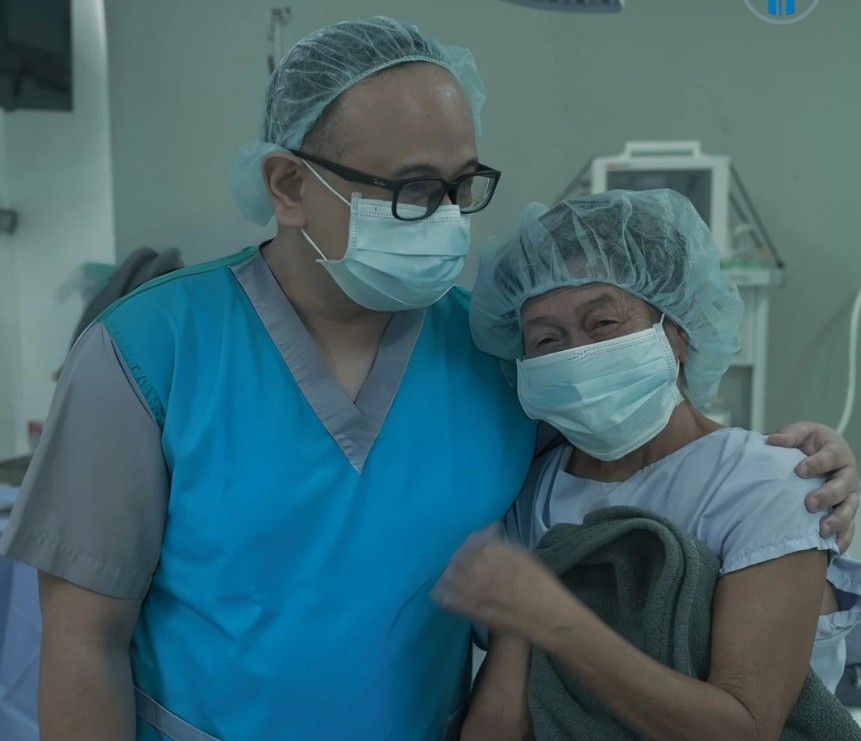Understanding Hip Replacement Surgery
Hip replacement surgery is one of the most common orthopedic procedures performed worldwide, offering hope for people suffering from chronic hip pain and mobility issues. It involves removing damaged or worn-out portions of the hip joint and replacing them with artificial implants designed to restore function and reduce discomfort. This surgery is typically recommended for individuals with advanced arthritis, severe fractures, or hip degeneration that does not improve with medications, physical therapy, or lifestyle changes. Patients often report dramatic improvements in their ability to walk, climb stairs, and enjoy daily activities once recovery is complete. The two main types of procedures are total hip replacement, where both the ball and socket are replaced, and partial replacement, which focuses only on damaged sections. While the operation is considered highly effective, costs in Western countries can make it inaccessible to many patients. This challenge has led to the rapid growth of hip replacement medical tourism as people search for affordable, high-quality options abroad.
Why Patients Consider Medical Tourism for Hip Replacement
Rising healthcare costs in the United States and Europe have pushed many patients to look beyond their home country for surgical solutions. Hip replacement medical tourism has become an attractive alternative because it allows patients to save up to 60–80% on surgical expenses while still receiving quality care. Long waiting lists in countries with public healthcare systems also encourage patients to travel abroad, where scheduling is often much faster. Another major factor is the availability of personalized services, including concierge-style care and patient coordinators who guide individuals throughout the process. Many destinations specializing in medical tourism provide English-speaking staff and transparent communication, which eases concerns about language barriers. Beyond affordability and shorter wait times, patients often choose medical tourism because it combines healthcare with the possibility of a comfortable recovery in serene locations. This unique blend of treatment and travel makes hip replacement abroad both cost-effective and appealing.
Leading Destinations for Hip Replacement Medical Tourism
Several countries have become leading hubs for hip replacement medical tourism due to their reputation for excellent care and affordability. India is a top choice, offering highly skilled orthopedic surgeons trained internationally, along with state-of-the-art hospitals. Thailand combines advanced medical facilities with a reputation for hospitality, making it a comfortable destination for recovery. Mexico is particularly popular among patients from the United States due to its proximity, affordability, and modern healthcare facilities. Turkey is also on the rise, with internationally accredited hospitals and advanced surgical techniques. Costa Rica appeals to North American patients who value shorter travel times and high-quality orthopedic care. These destinations have gained recognition not only for their affordability but also for international standards of care that rival Western hospitals. Patients often find the combination of experienced doctors, advanced facilities, and reduced costs to be the perfect balance for their medical journey.
Cost Breakdown of Hip Replacement Abroad
The cost of hip replacement varies depending on the country, hospital, surgeon, and type of implant used. In the United States, patients may face bills ranging from $35,000 to $50,000 or more for a single procedure, making it unaffordable for many without insurance coverage. In comparison, hip replacement medical tourism destinations like India and Mexico often offer the same surgery for $7,000 to $15,000, including hospital stays and surgeon fees. Factors that affect the total price include the choice of implant materials, length of hospital stay, rehabilitation services, and the complexity of the procedure. Many hospitals abroad provide bundled packages that cover not only the surgery but also airport transfers, accommodations, and post-operative care. Patients should also factor in travel expenses, such as flights, visas, and insurance, to calculate the overall budget accurately. Despite these extra costs, the savings compared to Western countries remain significant. By understanding the full cost breakdown, patients can make informed decisions about their treatment abroad.
Quality and Safety in International Healthcare Facilities
One of the biggest concerns for patients considering hip replacement abroad is whether international hospitals meet the same quality standards as those at home. Leading medical tourism destinations often boast facilities accredited by global organizations such as the Joint Commission International (JCI) and ISO, ensuring rigorous compliance with safety protocols. Many orthopedic surgeons in these countries are trained in the United States or Europe and bring years of specialized expertise. Modern hospitals abroad use advanced imaging technology, minimally invasive surgical techniques, and high-quality implants sourced from trusted manufacturers. Infection control and patient safety protocols are taken seriously, with hospitals adhering to international best practices. The focus on quality ensures that patients receive safe, effective, and reliable treatment comparable to Western facilities. As more people share positive experiences of medical tourism, trust in the safety and reliability of overseas care continues to grow.
Planning Your Hip Replacement Medical Tourism Journey
A successful hip replacement abroad requires careful planning and research. The first step is to identify reputable hospitals and surgeons with proven experience in orthopedic procedures. Many patients consult directly with doctors via telemedicine to discuss their condition and receive recommendations before traveling. Medical tourism facilitators and agencies play a key role by connecting patients with hospitals, helping arrange travel logistics, and providing on-the-ground support. Gathering and preparing medical records, such as X-rays and diagnostic reports, is crucial to ensure accurate pre-surgical assessments. Patients should also plan for passports, visas, and travel insurance that covers medical procedures abroad. Another important aspect is arranging rehabilitation and follow-up care, whether abroad or upon returning home. With proper organization, patients can enjoy a smooth and stress-free journey from consultation to recovery.
Benefits and Potential Risks of Hip Replacement Medical Tourism
The benefits of hip replacement medical tourism are numerous, starting with the significant cost savings that make life-changing surgery accessible to more people. Patients gain access to experienced surgeons, advanced facilities, and reduced wait times compared to their home countries. Some destinations also provide a recovery environment that blends healthcare with comfort, helping patients heal in stress-free settings. However, like any medical decision, there are potential risks to consider. Communication challenges, differences in healthcare systems, and the need for long-distance follow-up can present difficulties. There may also be concerns about managing complications after returning home. Patients can minimize these risks by choosing accredited hospitals, working with reputable facilitators, and ensuring proper aftercare arrangements. With careful planning, the benefits far outweigh the risks for many individuals seeking hip replacement abroad.
Recovery and Rehabilitation Abroad and at Home
Recovery from hip replacement is a critical part of the process, whether it occurs abroad or back home. Most patients spend several days in the hospital followed by a period of rehabilitation that includes physical therapy and gradual mobility training. Many medical tourism destinations offer rehabilitation centers where patients can begin recovery under professional supervision before traveling home. This allows them to regain mobility and strength while reducing the risk of post-operative complications. Once back home, continued therapy with local healthcare providers ensures long-term success. Patients are usually advised to make lifestyle adjustments, including low-impact exercise, weight management, and regular check-ups, to protect their new hip joint. Proper recovery planning ensures that patients maximize the benefits of surgery and enjoy improved quality of life. Hip replacement medical tourism not only provides affordable access to surgery but also supports patients in their rehabilitation journey.
Real Costs vs. Value of Medical Tourism for Hip Replacement
When evaluating hip replacement medical tourism, it is important to consider not only the financial savings but also the overall value. Patients often save tens of thousands of dollars while still receiving the same quality of care they would expect at home. Beyond affordability, they gain faster access to treatment, personalized support, and the ability to choose from highly skilled surgeons worldwide. The emotional value of regaining independence, mobility, and the ability to enjoy daily activities without pain cannot be measured solely in dollars. For many, the decision to undergo hip replacement abroad leads to long-term improvements in health and lifestyle. Patients may also save on future medical expenses, such as medications and physical therapy, due to successful surgical outcomes. By balancing costs with the broader benefits, medical tourism for hip replacement proves to be a worthwhile investment.
Frequently Asked Questions (FAQ)
1. Is hip replacement medical tourism safe?
Yes, when choosing accredited hospitals and experienced surgeons, hip replacement abroad can be just as safe as in the United States or Europe. Patients should research thoroughly and work with reputable medical tourism providers.
2. How much can I expect to save on hip replacement abroad?
Most patients save between 60–80% compared to U.S. costs, depending on the country and hospital selected.
3. What should I look for when choosing a hospital for surgery overseas?
Look for international accreditations, surgeon qualifications, advanced facilities, and transparent pricing.
4. Will my insurance cover hip replacement surgery abroad?
Some insurance plans may cover international procedures, but many patients pay out-of-pocket. It’s essential to check with your insurance provider before planning.
5. How long should I plan to stay in the destination after surgery?
Patients typically stay between two to four weeks to allow for initial recovery and follow-up appointments.
6. What happens if complications arise after I return home?
Patients should arrange follow-up care with local doctors in advance. Some hospitals abroad also provide remote consultations after surgery.
7. Do hospitals abroad use the same quality implants as those in the U.S.?
Yes, most internationally accredited hospitals use FDA-approved or CE-marked implants sourced from leading manufacturers.







